





 |
 |
 |
 |
 |
 |
| Andrys Basten | profile | all galleries >> Galleries >> MACHU PICCHU photos - May 1997 | tree view | thumbnails | slideshow |
You might also enjoy my HIGHLANDS OF PERU gallery.
Camera: Canon Elph - APS film (Analog) - Scans from prints
If you'd like others to know about this site, click here to Stumble it  . Thanks!.
. Thanks!.
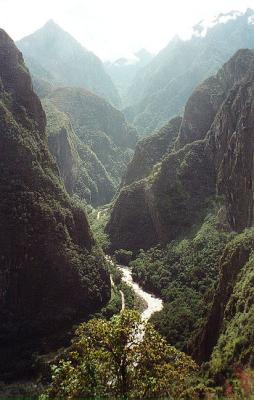 The winding hill up to Machu Picchu Going up narrow winding road to Machu Picchu
|
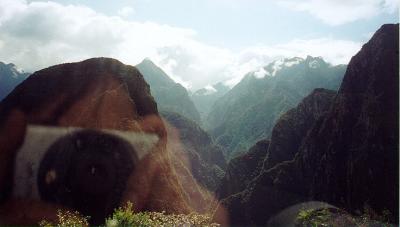 My first head-on encounter with Putucusi Mountain In the reflection from the bus window, my head is perfectly aligned with and part
|
 Scene facing the hotel at Machu Picchu - Mt. Putucusi Mt. Putucusi suffered from fire damage a year or two later,
|
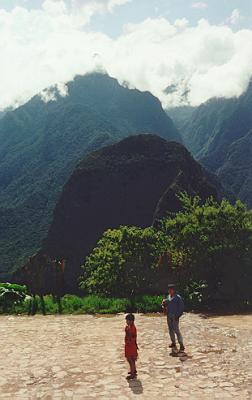 Two younger ones taking in the scenery |
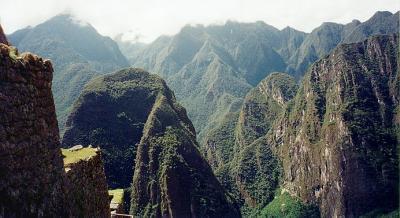 Going down the staircase behind the Houses of the Caretakers A walkway in between these houses is a main entry point to the ruins of the city.
|
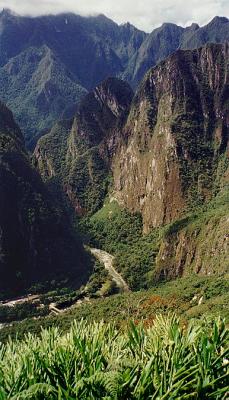 The Urubamba River about 1,500 feet below In the foreground are ferns among the other growth, tho'
|
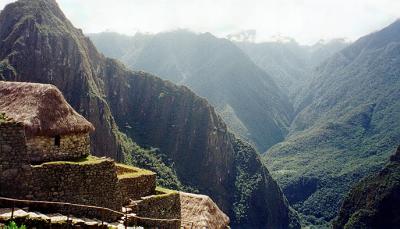 Entryway to the old city of Machu Picchu This is one of the "Caretakers' Houses" with another one below it.
|
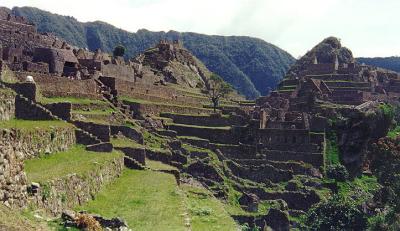 First view of the interior of the old city The pyramid-shaped and terraced Intiwatana hill (top center) was likely a
|
 Nearing the top of the steps not far from Watchman's Hut Handsome llama there. There are several 'working' at the site. |
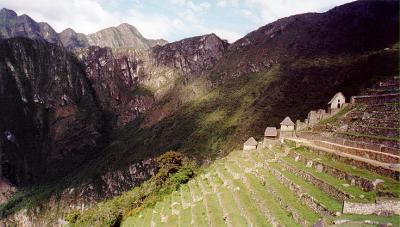 Looking across at the other side of the Caretaker houses. Much more info in my PhotoDiary. |
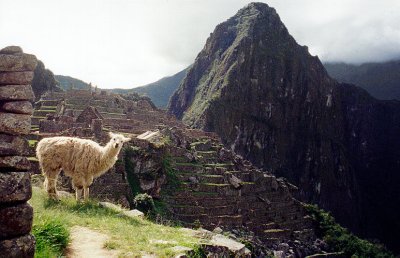 My curious llama This is a favorite of mine, though it's a grainy shot.
|
 The head llama surveys the southeast portion of his domain. |
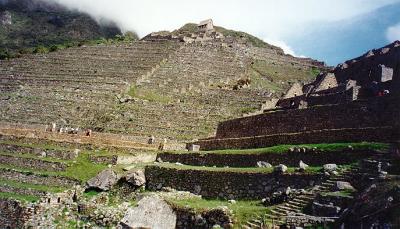 Part of the 'Agricultural sector' At the top is the funerary level, where the stock photos of Machu Picchu (Old Peak) are taken,
|
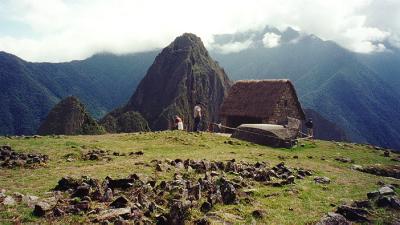 The Funerary level, with Watchman's Hut and carved stone piece The carved stone piece may have been used for offerings or funeral rites. Behind the Watchman's Hut, we see the familiar Wayna Picchu.
|
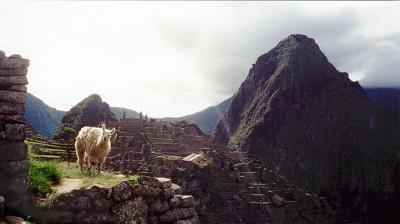 My favorite llama is still curious. This llama's other photo was chosen for the desk in the opening of a weekly tv series about an
|
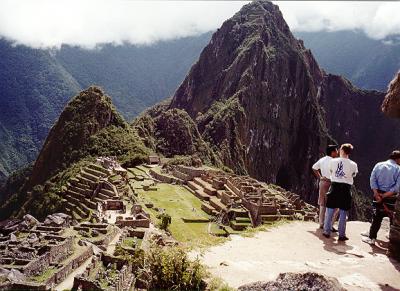 From Watchman's Hut. Note the lack of railings. The thatched roof of the Watchman's Hut is seem at right edge. |
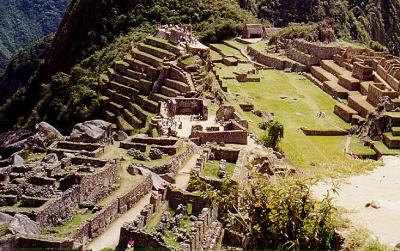 Zoomed and cropped left area of previous photo, from Watchman's Hut |
 Huayna Picchu enjoyed by group at right, below |
 Hiram Bingham named this ""The Lower Urban Sector" |
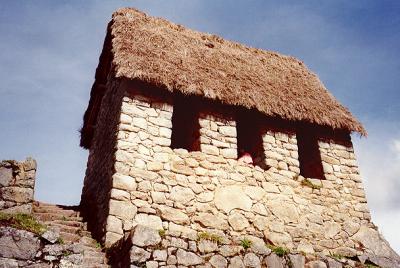 Watchman's Hut seen from the stairs going up to it |
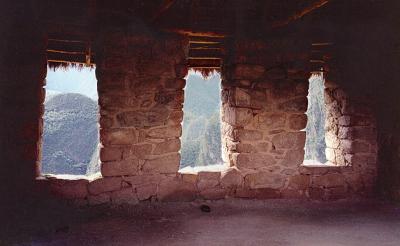 Inside the hut. What a view they had More windows in trapezoidal shapes. It was interesting to stand at the windows and realize that
|
 A view of Putucusi from the watchman's level |
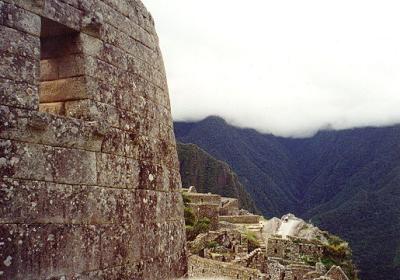 Exterior of The Temple of the Sun. The first building Hiram Bingham saw in 1911 What a sight that must have been. While everything was covered in thick growth, part of this building was visible, and he quickly had the growth cut back. |
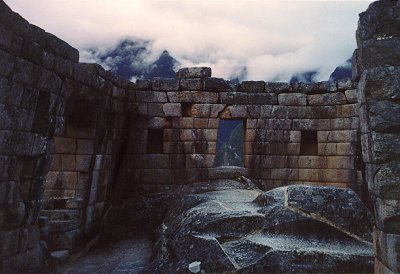 Interior of the Temple of the Sun Stone piece at the right may have doubled as a sort of sun dial and an altar for human sacrifices.
|
 Window on the left, inside theTemple of the Sun This is the famous odd opening resembling an entranceway but which leads nowhere.
|
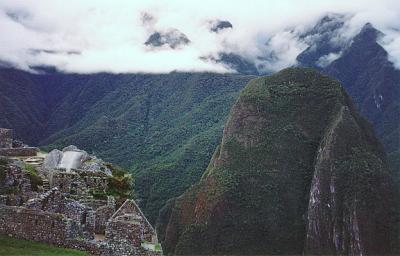 Beautiful view from the Temple's left window when looking to far-right The now familiar Putucusi Mountain has quite an effect there, but you seldom see it in photos of
|
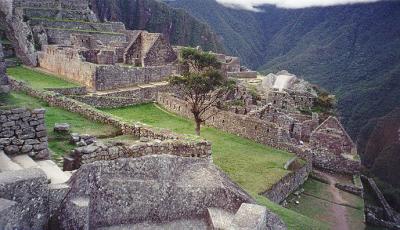 View from that left window, looking center-right |
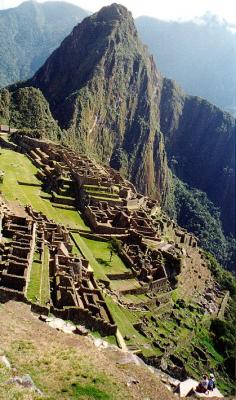 Note couple at the bottom right, enjoying the view. The central plaza and (mostly) the Lower Urban Sector as seen from the side window of the Watchman's
|
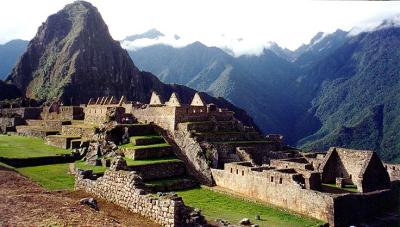 "Lower Urban Sector" (or "Hurin") holding workers' houses Looking northeast, we see the area holding the more prosaic buildings housing the workers, the
|
 From the city below, the Watchman's Hut. Portal at bottom right. The portal ahead (lower right, ground level) is of typically fine Inca stonework.
|
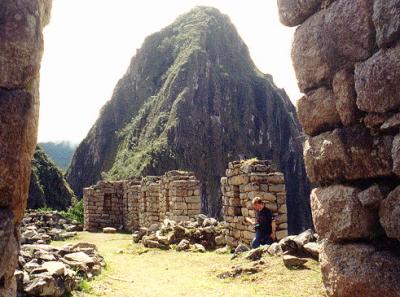 From the entrance of an area in the northeast end of the old city. Wayna Picchu looms in the background. |
 At lower left, the religious and royal areas The "High Urban Sector" ("Hanan"), on the west side, includes Intiwatana Hill, the Sacred Plaza,
|
 The Sacred Plaza's "Main Temple" The ground is settling below the right corner of this 3-sided building and has caused serious
|
 Maze-like and reminiscent of computer game "Doom" The Lower Urban Sector ("Hurin"), endless passageways that turn every which way.
|
 Temple of the Condor (The links to photos by others, of this interesting site,
|
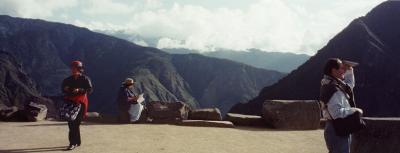 Back at The Sacred Plaza This was taken from the House of Three Windows, facing west, just before we went up to the top of the
|
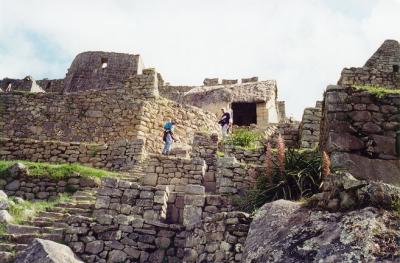 Approaching the House of the Caretaker of the Fountains To its right (our left) is the Temple of the Sun, its rounded side seen in this photo. |
 At the entrance point again. No protecting rails there. Other countries don't tend to worry about protective railing.
|
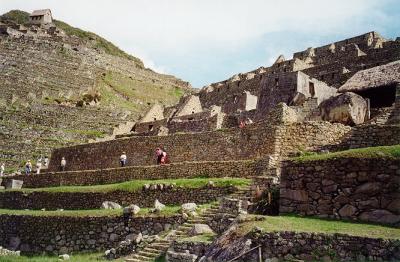 Temple of the Sun's odd window-portal facing the House of the Caretaker of the Fountains Top left is the Watchman's Hut. You can see the city-on-a-mountaintop aspect of the place,
|
 Mt. Putucusi at end of day (photo is not ultra-dark like the thumbnail is). The lighting constantly changes, with the help of clouds that seem to hover nearby during the sunniest times.
|
 After the bulk of tourists have left, time can seem suspended. The best time to experience Machu Picchu is after most of the other tourists have left the
|
| comment | share |
| Andrys Basten | 29-Aug-2013 18:32 | |
| Jan Jones | 29-Aug-2013 10:49 | |
| Andrys Basten | 28-May-2012 16:32 | |
| Marilou Castro | 28-May-2012 06:12 | |
| vanessa | 12-Jun-2010 00:14 | |
| Andrys Basten | 06-Apr-2010 00:32 | |
| Hannah Grace | 05-Apr-2010 09:16 | |
| Andrys Basten | 10-Apr-2009 01:10 | |
| Terry Fitzsimmons | 09-Apr-2009 19:36 | |
| Guest | 18-Nov-2008 04:48 | |
| Steve Goldthorp | 14-Jan-2008 22:00 | |
| Guest | 14-Dec-2007 17:34 | |
| Guest | 18-Nov-2007 21:46 | |
| Suzy Walker-Toye | 08-Oct-2007 09:46 | |
| Andrys Basten | 21-Sep-2007 03:48 | |
| Shoeb | 20-Sep-2007 23:39 | |
| Greg Lief | 06-Aug-2007 22:52 | |
| Sam X | 21-Jul-2007 13:29 | |
| Guest | 24-Jun-2007 23:47 | |
| Guest | 08-Apr-2007 05:44 | |
| Guest | 10-Jan-2007 23:17 | |
| Michael | 01-Jan-2007 03:52 | |
| Guest | 10-Oct-2006 14:51 | |
| Ken McColl | 02-Jun-2006 10:35 | |
| Robin | 28-Apr-2005 16:54 | |
| Andrys Basten | 01-Apr-2005 09:50 | |
| philippe | 31-Mar-2005 18:46 | |
| fab | 08-Mar-2005 18:51 | |
| Guest | 27-Feb-2005 13:06 | |
| Andrys Basten | 12-Apr-2004 01:43 | |
| Franz Bauer | 22-Mar-2004 12:23 | |
| Ron Horloff | 09-Feb-2004 23:22 | |
| Andrys Basten | 03-Feb-2004 11:20 | |
| northstar37 | 02-Feb-2004 23:02 | |
| Andrys Basten | 03-Jan-2004 23:22 | |
| Eldar Kadymov | 03-Jan-2004 23:03 | |